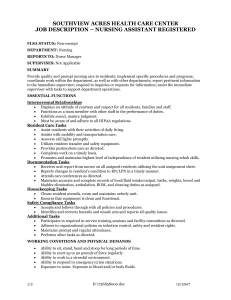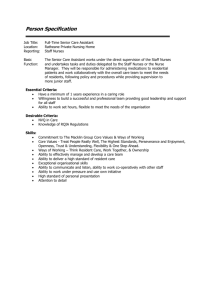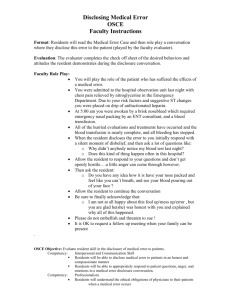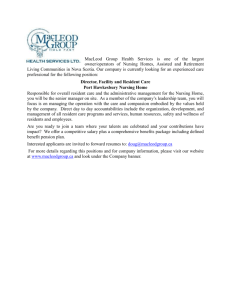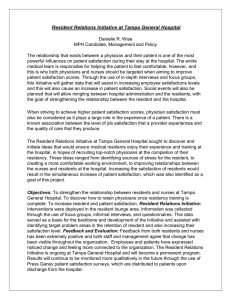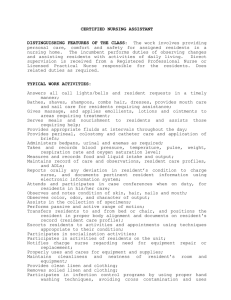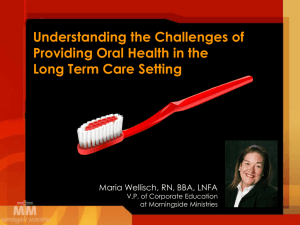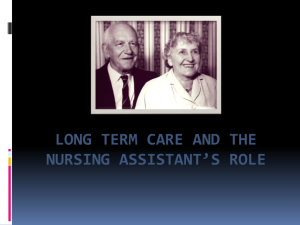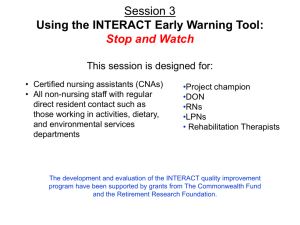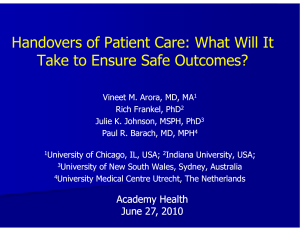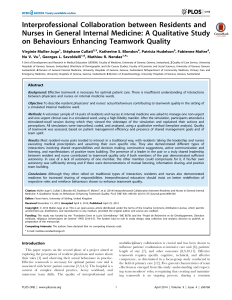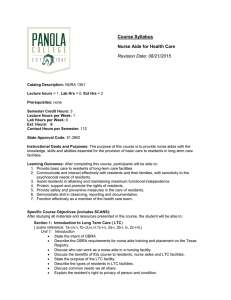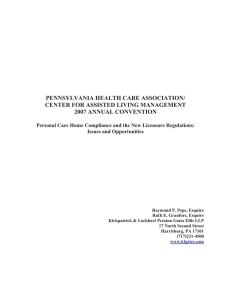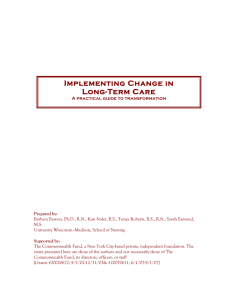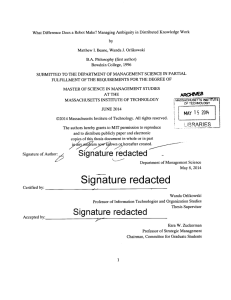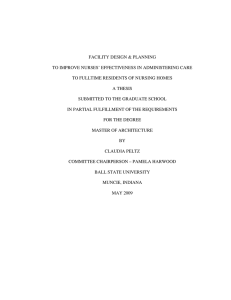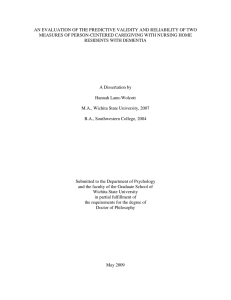END OF LIFE CARE
advertisement
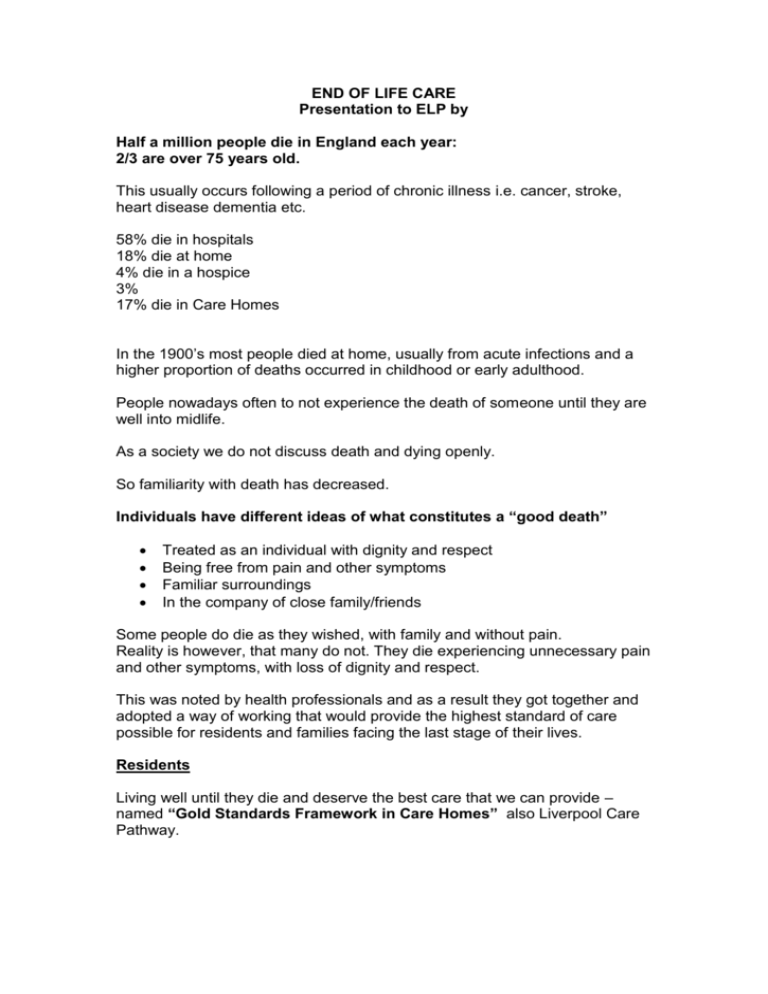
END OF LIFE CARE Presentation to ELP by Half a million people die in England each year: 2/3 are over 75 years old. This usually occurs following a period of chronic illness i.e. cancer, stroke, heart disease dementia etc. 58% die in hospitals 18% die at home 4% die in a hospice 3% 17% die in Care Homes In the 1900’s most people died at home, usually from acute infections and a higher proportion of deaths occurred in childhood or early adulthood. People nowadays often to not experience the death of someone until they are well into midlife. As a society we do not discuss death and dying openly. So familiarity with death has decreased. Individuals have different ideas of what constitutes a “good death” Treated as an individual with dignity and respect Being free from pain and other symptoms Familiar surroundings In the company of close family/friends Some people do die as they wished, with family and without pain. Reality is however, that many do not. They die experiencing unnecessary pain and other symptoms, with loss of dignity and respect. This was noted by health professionals and as a result they got together and adopted a way of working that would provide the highest standard of care possible for residents and families facing the last stage of their lives. Residents Living well until they die and deserve the best care that we can provide – named “Gold Standards Framework in Care Homes” also Liverpool Care Pathway. Key Developments: Register – regular planning meetings to discuss and focus on care of individuals Completion of planning needs of residents – coding/needs support plans Reduce need for crisis hospital admission To facilitate advance care planning – discussing choices, preferences and options that meet the needs of resident and families Working closely with families, making them aware of choices that are available Better working with GP, District Nurse, Palliative Care Specialists, hospitals etc. Information and communication with other services, ie. Out of hours medical services, District Nurses, ambulance. Use of an agreed plan for final days of life, to enable a “good death” Ongoing reflection and education of staff according to their needs Building their confidence and ability to provide excellence in care Outcome for Resident The resident is aware that physical symptoms are anticipated and reduced where possible before they cause problems. That they have choices and that their preferences are taken into consideration They feel supported and informed and that potential problems are anticipated and reduced. Families and carers feel enabled, involved and informed That staff, GP’s and District Nurses and specialists are working together to provide the best care for the resident as an individual. The Gold Standard Framework in Care Homes also provide training programme workshops which includes training for staff, residents and families to make improvement in care. At Haighfield they use the GSF strategy. They are a nursing home and have nurses in situ. Once it has been decided that a resident is at the end of life, via a monthly meeting the GP will prescribe necessary medication and Ann and her staff are qualified to administer. I manage a Care Home and we do not have registered nurses working for us. Like Haighfield we have regular meetings, monitor health of residents. Concerns are passed on to GP’s, Advanced Nurse Practitioner and District Nurses. THEY then determine the stage of life and level of care required. If it is agreed that a resident is at the last stages of life ie. They meet 2 of the following: Bed bound Semi comatose Can only take sips of fluid Cannot take tables Not eating The GP will prepare EOFP documents included medication (always housed in a locked cupboard). The District Nurse will then be on call at any time if staff are concerned about the resident suffering from pain or are distressed etc. Our staff would continue to care for the resident ensuring that they are clean, comfortable, turned if necessary, offering appropriate food/drinks etc. Encouraging family and friends to visit, reporting changes, close contact with health professionals. Unfortunately, we are not nursing and if chronic symptoms occur then GP’s will admit to hospital if they need nursing care, ie strokes or bad falls. This is a last resort, we do what we can to keep them at home. If they have to go to hospital we give the ambulance people a “blue card”, this shows that the person has expressed wishes to die at home and they are rushed through the A&E and are returned home as soon as possible.



